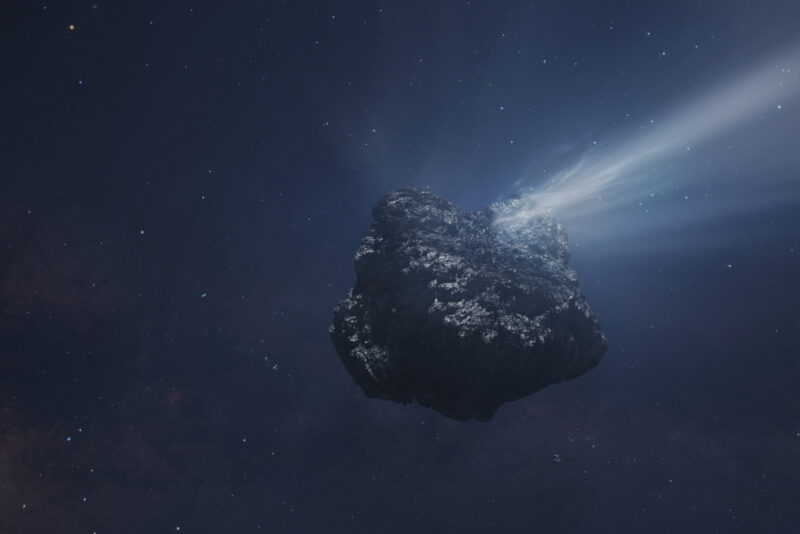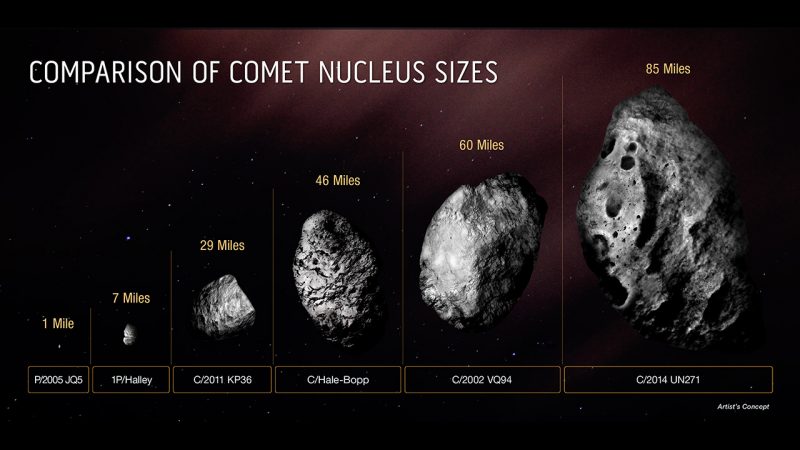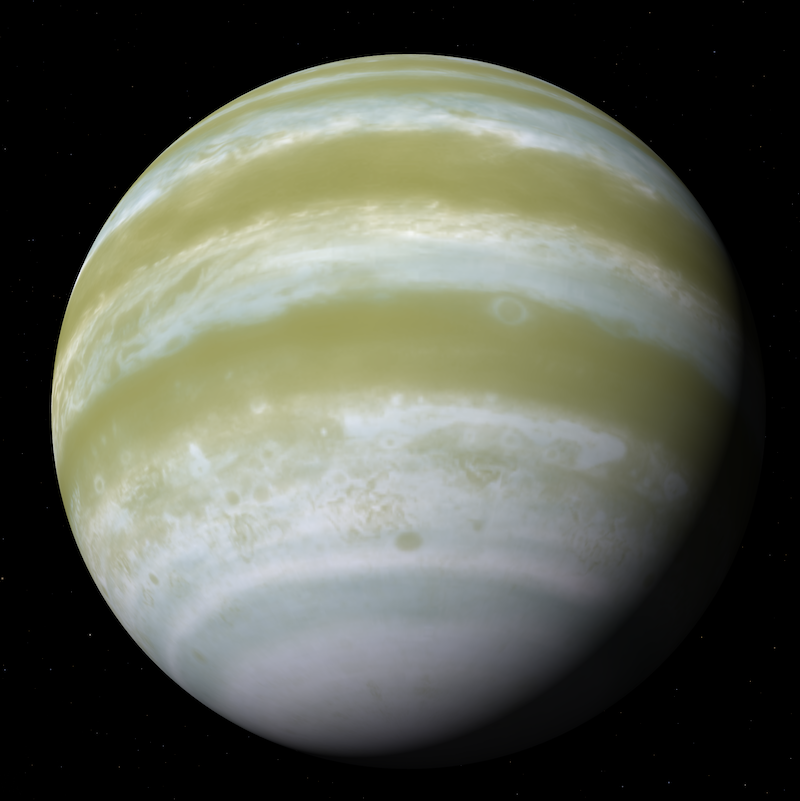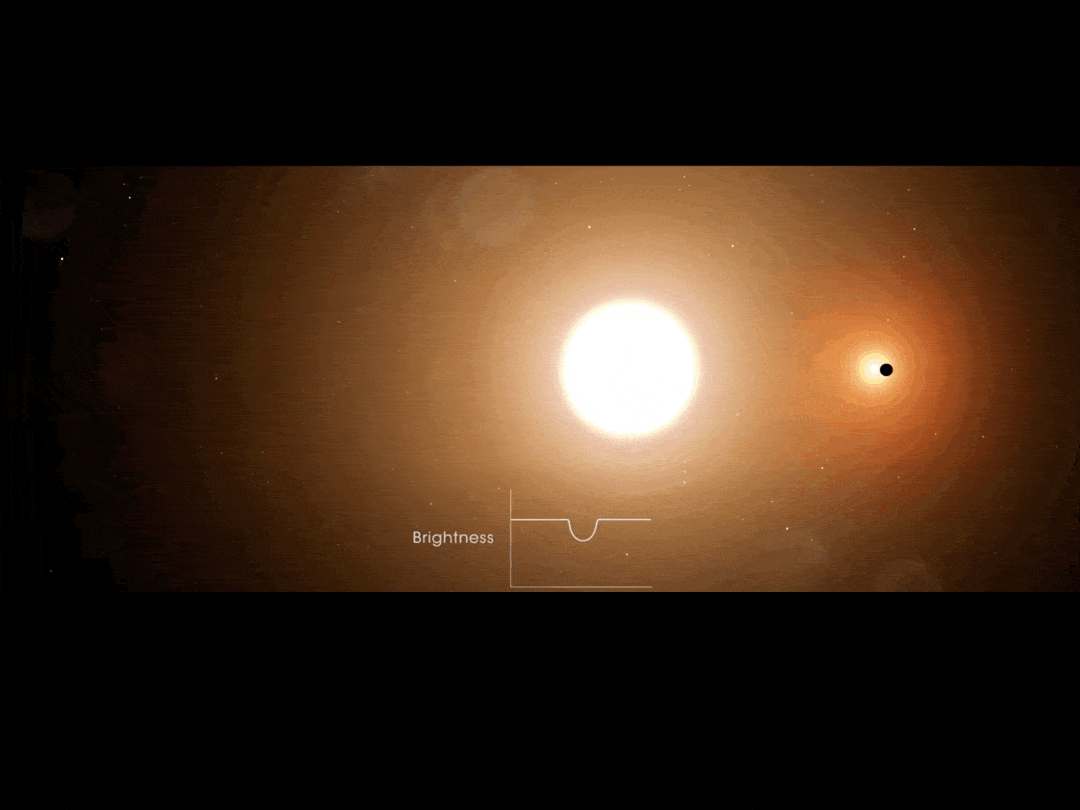Now Reading: Mega comet Bernardinelli-Bernstein is erupting with jets
-
01
Mega comet Bernardinelli-Bernstein is erupting with jets
Mega comet Bernardinelli-Bernstein is erupting with jets


Mega comet Bernardinelli-Bernstein is erupting with jets
An enormous comet, named Bernardinelli-Bernstein, is headed toward the sun. We first told you about this mega comet in 2021. But don’t worry, it’s not coming anywhere near Earth. On January 29, 2031, it will come closest to the sun at a comfortable 1 billion miles away, or slightly farther than Saturn’s orbit. But on June 16, 2025, NSF’s National Radio Astronomy Observatory said jets are erupting from the comet’s nucleus as it barrels inward in our solar system.
The 85-mile-wide (140-km-wide) comet is about 10 times the size of a typical comet. At the moment, Comet Bernardinelli-Bernstein is still more than halfway to Neptune. That’s 16.6 astronomical units (AU) away, or more than 16 times the distance from Earth to the sun. Though it’s still far away, astronomers used the Atacama Large Millimeter/submillimeter Array (ALMA) in Chile to get a better look at it.
The new observations confirm that this is the largest comet from the Oort Cloud we’ve ever found. And they also showed carbon monoxide gas erupting in complex and evolving jets coming from the comet’s nucleus. Lead author Nathan Roth of American University and NASA Goddard Space Flight Center said:
These measurements give us a look at how this enormous, icy world works. We’re seeing explosive outgassing patterns that raise new questions about how this comet will evolve as it continues its journey toward the inner solar system.
The astronomers published their peer-reviewed research in The Astrophysical Journal Letters on June 12, 2025.
More insight on Comet Bernardinelli-Bernstein
This is the first time astronomers have detected outgassing in the giant Bernardinelli-Bernstein. And astronomers expect it to increase its outgassing and jet activity as it gets closer to the sun, with its solar radiation pressure and solar wind. Continued observations of the comet’s gases will help astronomers understand more about the comet’s composition. In turn, that will provide more insight into the conditions of the early solar system. As the press release said:
Such discoveries help answer fundamental questions about where Earth and its water came from, and how life-friendly environments might form elsewhere.
Previous news on Comet Bernardinelli-Bernstein
Scientists announced on April 12, 2022, that they created a high-quality image confirming C/2014 UN271 (Bernardinelli-Bernstein), affectionately known as BB, is the largest Oort Cloud comet yet discovered. The new comet’s nucleus, or core, is about 85 miles (140 km) wide, or about twice the size of Comet Hale-Bopp, which put on such a good show for us in 1997. And BB is headed for the inner regions of the solar system now.
The good news is NASA says it’ll come nowhere near Earth. From NASA’s official announcement:
The behemoth comet, C/2014 UN271 (Bernardinelli-Bernstein) is barreling this way at 22,000 miles per hour (35,400 kph), from the edge of the solar system. But not to worry. It will never get closer than 1 billion miles away from the sun, which is slightly farther than the distance of the planet Saturn. And that won’t be until the year 2031.
The team behind the study published their results on April 10, 2022, in the peer-reviewed Astrophysical Journal Letters.

Discovery of the biggest comet yet
University of Pennsylvania astronomers Pedro Bernardinelli and Gary Bernstein discovered the comet. They were reviewing images from 2014 to 2018 from the Dark Energy Survey as part of their computer-aided search for trans-Neptunian objects.

Other big comets
The previous record holder for the largest comet nucleus was C/2002 VQ94 (LINEAR). It measures about 60 miles (100 km) at its widest.
The new big kid on the cosmic block is far from alone, said David Jewitt. Jewitt is a professor of planetary science and astronomy at UCLA and co-author of the study that refined the comet’s measurements. Jewitt said:
This comet is literally the tip of the iceberg for many thousands of comets that are too faint to see in the more distant parts of the solar system. We’ve always suspected this comet had to be big because it is so bright at such a large distance. Now we confirm it is.
Comet BB is getting closer
While the discovery of Comet BB came in 2014, its first appearance on image data was in 2010. At that time, BB was 3 billion miles (4.8 billion km) from Earth, coincidentally about the average distance to Neptune.
Already the core is shedding gas and dust at an impressive rate of about 2,200 pounds (1,000 kg) a second. The authors of the paper described it as:
… an enormous (albeit uncertain) mass-loss rate.
It was that voluminous outpouring of gas and dust coming from a body so distant in the solar system that prompted the research team to try measuring what they suspected was a huge cometary body. Man-To Hui of the Macau University of Science and Technology, Taipa, Macau, led the team. Hui said:
This is an amazing object, given how active it is when it’s still so far from the sun. We guessed the comet might be pretty big, but we needed the best data to confirm this.
Obtaining images of Comet BB
To gather that data, Hui’s team used the Hubble Space Telescope’s Wide Field Camera 3 to take five photos of the comet on January 8, 2022.
In announcing the team’s find, NASA described the process team members used to discern the size of the nucleus against the backdrop of the glare of the comet’s coma and tails:
The comet is currently too far away for its nucleus to be visually resolved by Hubble. Instead, the Hubble data show a bright spike of light at the nucleus’ location. Hui and his team next made a computer model of the surrounding coma and adjusted it to fit the Hubble images. Then, the glow of the coma was subtracted to leave behind the starlike nucleus.
By combining the Hubble data set with radio observations made by the Atacama Large Millimeter/Submillimeter Array (ALMA) in Chile, the team was able to assign upper and lower limits to the size of C/2014 UN271.
The team also found the comet is less reflective than they originally thought. According to Jewitt:
It’s big and it’s blacker than coal.
Bottom line: Astronomers have made new observations of the mega comet Bernardinelli-Bernstein. They’ve found the comet is erupting with jets as it barrels toward the sun.
The post Mega comet Bernardinelli-Bernstein is erupting with jets first appeared on EarthSky.
Stay Informed With the Latest & Most Important News
Previous Post
Next Post
-
 012024 in Review: Highlights from NASA in Silicon Valley
012024 in Review: Highlights from NASA in Silicon Valley -
 02Panasonic Leica Summilux DG 15mm f/1.7 ASPH review
02Panasonic Leica Summilux DG 15mm f/1.7 ASPH review -
 03From Polymerization-Enabled Folding and Assembly to Chemical Evolution: Key Processes for Emergence of Functional Polymers in the Origin of Life
03From Polymerization-Enabled Folding and Assembly to Chemical Evolution: Key Processes for Emergence of Functional Polymers in the Origin of Life -
 04How New NASA, India Earth Satellite NISAR Will See Earth
04How New NASA, India Earth Satellite NISAR Will See Earth -
 05And Thus Begins A New Year For Life On Earth
05And Thus Begins A New Year For Life On Earth -
 06Astronomy Activation Ambassadors: A New Era
06Astronomy Activation Ambassadors: A New Era -
07SpaceX launch surge helps set new global launch record in 2024




















